ศิษย์เก่า
ดุษฎีบัณฑิต
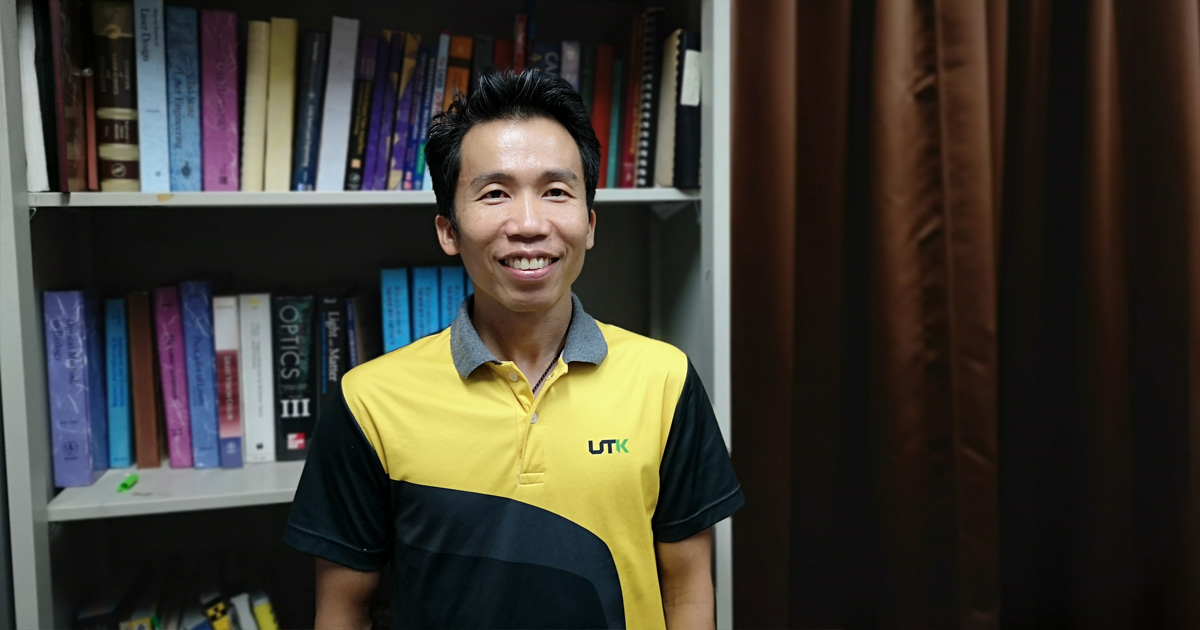
ดร.ฉัตรชัย (เมี๊ย) พะวงษ์
Applied Optics
Ph.D.(Physics) Granted 2012
chutchai.p@rmutk.ac.th

ดร.อัสมา (มา) อามิง
DESIGN AND CHARACTERISATION OF ONE- AND TWO- DIMENSIONAL PHOTONICN CRYSTAL STRUCTURE
Ph.D.(Physics) Granted 2016
a.asmar99@gmail.com

ดร.ไตร (ไตร) อัญญโพธิ์
Physics Education
Ph.D.(Physics) Granted 2021
Trai.uny@gmail.com
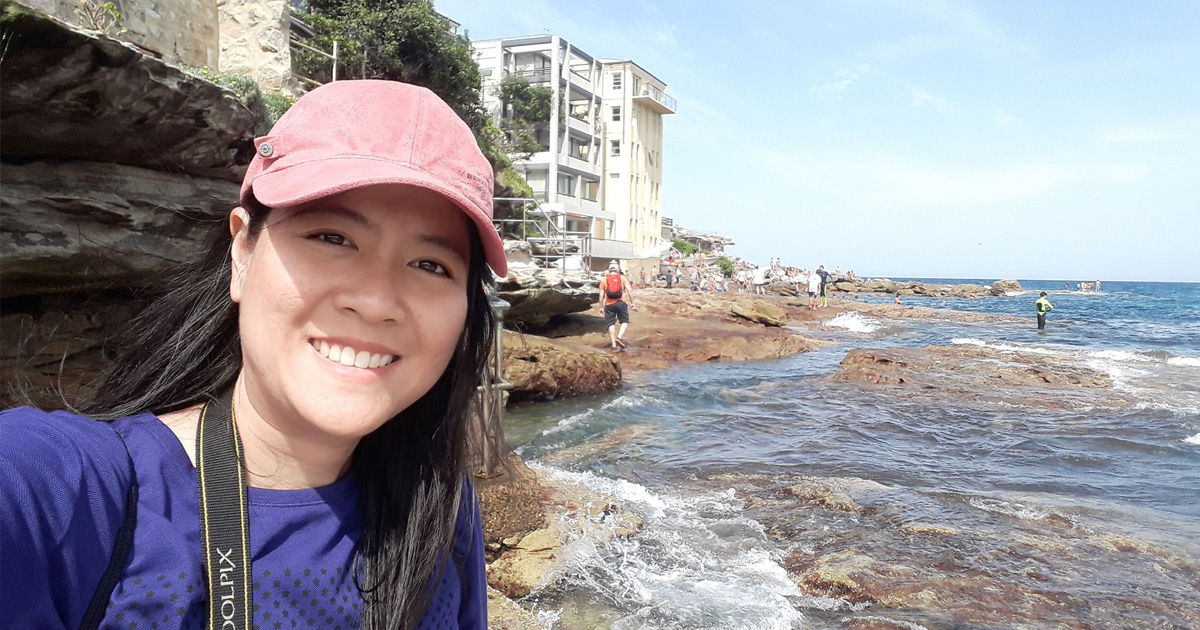
ดร.อรุณี (ใหม่) เอียมใบพฤกษ์
APPROACHES TO DRAWING FREE-BODY DIAGRAMS TO DEVELOP STUDENT UNDERSTANDING OF NEWTON'S LAWS
Ph.D.(Physics) Granted 2021
eam.arunee@gmail.com
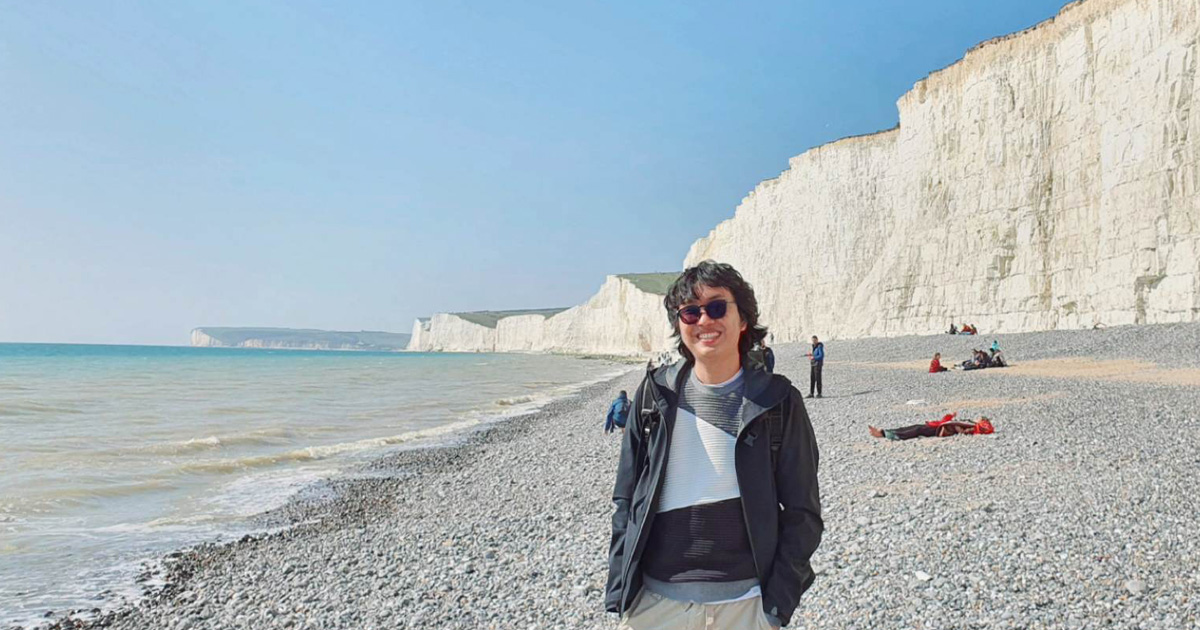
ดร.ณัฐวัฒน์ (นอร์ทสตาร์) พันธุ์ชาติ
THE FABRICATION AND APPLICATIONS OF HOLLOW CORE ANTI-RESONANT FIBERS FOR TERAHERTZ GUIDANCE
Nowadays, many researchers attempt to improve the transmission quality of the optical fibers in the Terahertz regime. By guiding electromagnetic waves in an air core of a hollow core fiber, the scattering loss and nonlinear effect, which could degrade the transmission, can be significantly minimized. There are several ways of guiding electromagnetic waves in a hollow-core fiber such as photonic bandgap and anti-resonance reflecting mechanisms. The anti-resonance reflecting guidance mechanism is of great interest because the structure of this fiber is less complicated to fabricate than the photonic bandgap fibers. In this study, the hollow core anti-resonant fibers were designed and numerically investigated for low loss transmission in the THz regime. Some of the fiber models were used to develop the nozzles that are used for the fiber fabrication process. The fabricated fibers were investigated and characterized by the THz time-domain spectroscopy to confirm the numerical results. Moreover, some of the hollow core anti-resonant fiber models were also developed for a special purpose of maintaining polarization property of the transmitted THz wave. A polarization-maintaining fiber is a key feature for some optical fiber applications such as interferometric devices and quantum computing. In addition, the optical properties: effective material loss, confinement loss, and birefringence operating at 1 THz were numerically studied and discussed. Ph.D.(Physics) Granted 2022
n.phanchat@soton.ac.uk
024301956

ดร.ณัฐสิมา (บัวตอง) ศักดา
THE NOVEL DESIGN OF RECONFIGURABLE PHASE CHANGE METASURFACE FOR THE THZ REFLECTOR
Over a couple of decades, the radiation locating in the gap between infrared and microwave called “Terahertz Radiation” has been utilized increasingly. The spectral range of the T-rays spread over the range of 0.3-3.0 THz. This frequency has been under scrutiny according to their unique properties including: (i) non-ionizing to biological cells, (ii) strongly sensitive to water molecules, and (iii) frequency matching to the mode vibrations of biomolecular bonding. As a result, appropriate THz applications regarding the properties has been sought after by researchers worldwide. However, the challenge is found as the shortage of the terahertz devices since the THz bandgap is not commonly found in available devices. Fortunately, the emerging of metamaterials, defined as “the engineered periodic structure came to a rescue because they can be designed to provide the required electromagnetic response from their specially designed unit cell structure rather than the constituent material.” The metamaterials have become the potential device in order to operate in the terahertz regime. Nevertheless, those fascinating properties is generally fixed after the fabrication process has been done. For a better flexibility in the usage, the property of the metamaterials such as the switchability can be enhanced by introducing the phase change material (PCM). PCM responses significantly different to the electromagnetic wave when operating between two states by using optical or electrical pulses to induce. In this research, the hexagonal metasurface was designed and showed the reflection property of the dual-band at 1.72 and 2.70 THz. In addition, the volatile phase change material known as GST was integrated to the designed metasurface obtain the switchable property. The numerical results reveal that the first mode resonance (1.72 THz) has a consistent level of reflectivity during the phase transition, while the second resonance (2.70 THz) achieves the switchability with a contrasts value around 80% when the phase change from amorphous to crystalline states. The geometrical parameters, including periodicity, sidelength, dielectric thickness, and GST thickness, were also investigated to optimize the performances of the reflector evaluated by using two key parameters: insertion loss (IL) and extinction ratio (ER). Finally, the incident angle and polarization were also examined. Ph.D.(Physics) Granted 2023
natsima.sak@gmail.com
0827611902
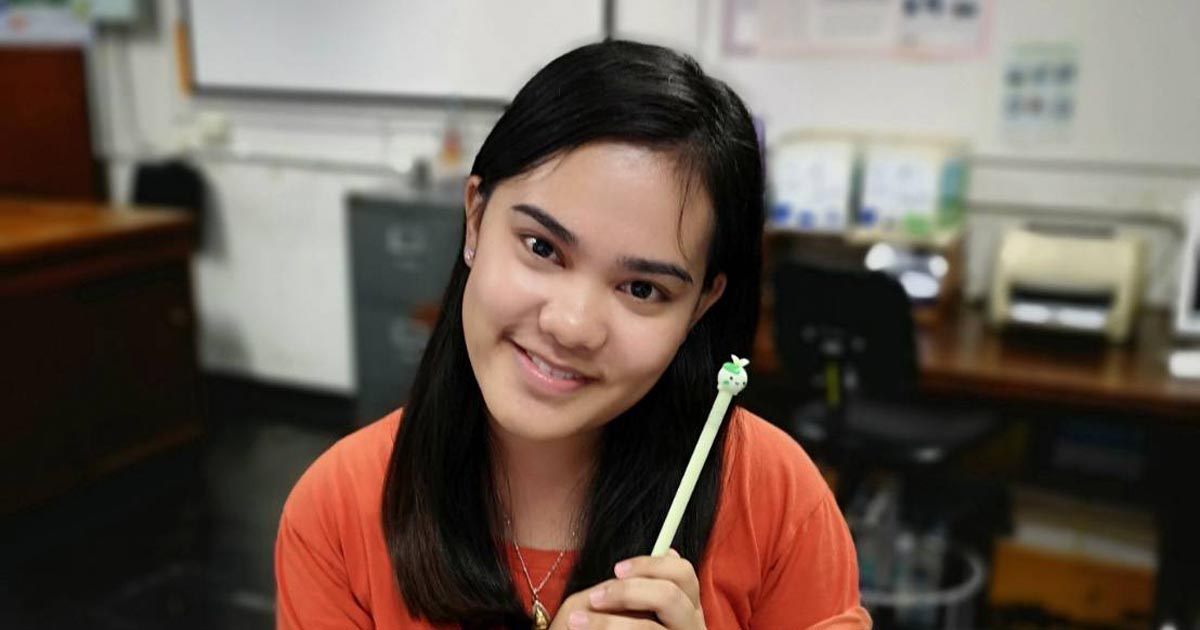
ดร.กันต์กนิษฐ์ (บิ๋ม) คงกลัด
OPTICAL TECHNIQUE-BASED LABEL-FREE RAMAN APPROACHES FOR BIOMEDICAL APPLICATIONS: MALARIA DETECTION AND LIVER FIBROSIS IN COCULTURED SPHEROID MODEL
Raman scattering exploits the frequency shift of the wave relative to the incident beam, reflecting the molecular fingerprint of the material. With their non-destructive nature, label-free detection, and simple sample preparation, Raman approaches have been widely used in the study of biomedical samples. This work investigates the applications of Raman techniques in studying malaria and liver fibrosis. Malaria is an endemic disease in tropical countries like Thailand, where the most severe and potentially fatal form is caused by Plasmodium falciparum. In this study, blood samples containing normal red blood cells and Plasmodium falciparum-infected red blood cells were examined on a glass slide and a surface-enhanced Raman substrate (OnSpec chip) using the Raman microscope with the point illumination configuration. Our findings demonstrate a potential of the Raman technique as an alternatively effective method for detecting malaria samples. The intensity of Raman spectra at 747, 1128, 1228, 1372, 1560, and 1620 cm-1, corresponding to hemozoin, the digested product of hemoglobin, was used to distinguish between normal and Plasmodium falciparum-infected red blood cells. Additionally, a separation model based on the PCA-LDA mechanism was developed and analyzed using Raman spectra. The assessments of the blind samples of blood by volunteers revealed that the separation model accurately classified different sample types with up to 80% accuracy. To expedite the acquisition of Raman spectra in the microscope, the line illumination configuration was utilized, where a line-shaped laser was used to examine the sample area. This allowed for the rapid acquisition of a large number of spectra, resulting in hyperspectral Raman images. This is the first application of the Raman technique to 3D samples for the study of liver fibrosis. Liver fibrosis is an irregular recovery response that can be caused by various complications, including hepatocellular carcinoma (HCC), a leading cause of death in Thailand. HCC can progress to liver fibrosis due to chronic liver damage. In this study, co-cultured HepG2-LX2 spheroids were used as a 3D in vitro liver model, consisting of two distinct cell types. Hyperspectral Raman images were used to distinguish between the different cell types within the co-cultured spheroids. HepG2 and LX2 cells exhibited distinct intensities of cytochrome-related bands and autofluorescence. The culture medium of co-cultured spheroids was supplemented with liver fibrosis activating factors, including fatty acids and TGF-β, two days before observation. TGF-β triggered fibrosis, while fatty acids caused injury to the co-cultured spheroids. Raman images clearly revealed the deposition of collagen and lipid accumulation following the addition of the activating factors. In the two aforementioned applications, the potential of Raman approaches in biomedical applications was demonstrated. Raman spectra allow for the simultaneous presentation of a lot of biomolecule information. There were many spectra gathered, and they can all be preserved for being an updateable database. This Raman approach's capabilities may allow for future advancement in terms of clinical diagnostics. Ph.D.(Physics) Granted 2023
gunganist.kog@outlook.co.th
0617276687
มหาบัณฑิต
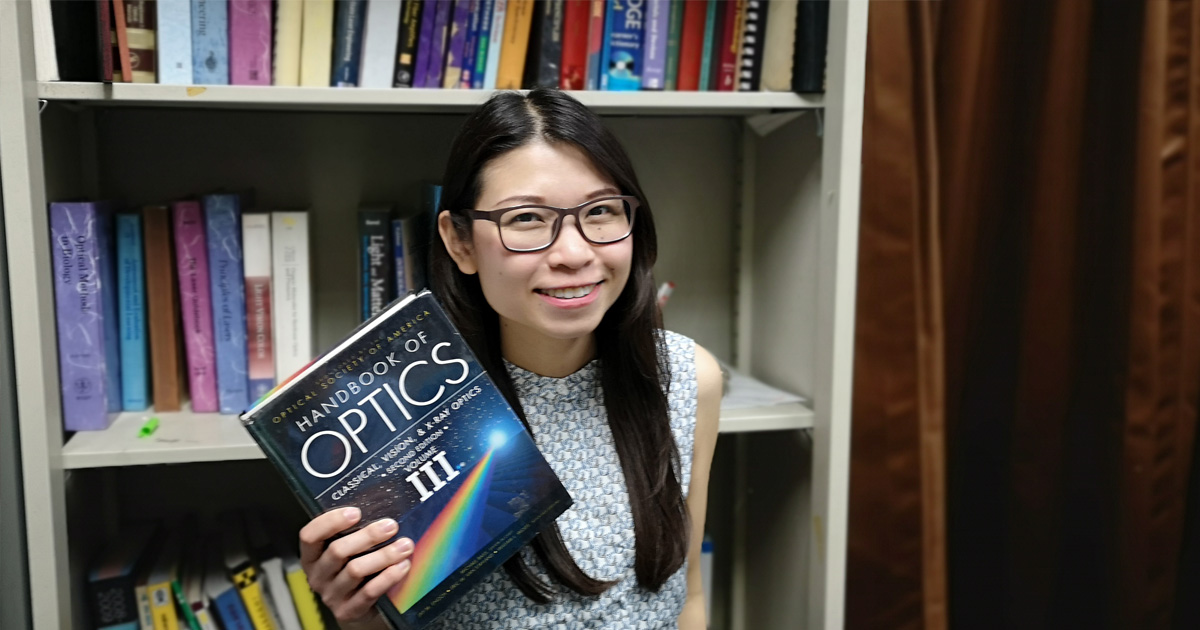
วรรณวิสา (บู) ทลาไธสง
FABRICATION OF FIBER OPTIC TUNABLE FILTER BASED ON LONG PERIOD FIBER GRATING
M.Sc.(Physics) Granted 2015
W.Talataisong@soton.ac.uk
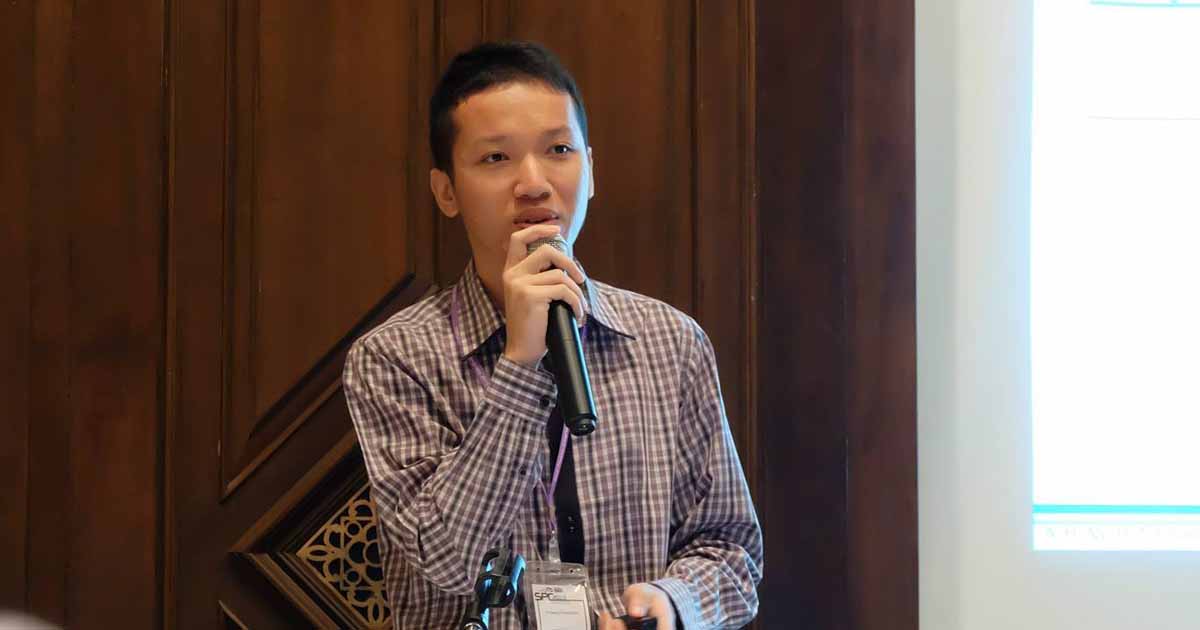
ประทีป (ต๋อง) พิมพ์สาร
CIRCULARLY POLARIZATION FILTER SIMULATION IN 1D CHIRAL DEFECTIVE PHOTONIC BANDGAP STRUCTURE
The circularly polarization filter is designed in 1D chiral defective photonic bandgap structure. The lossless and non-dispersive chiral media are used in this study. By using computational simulation, finite-difference time-domain (FDTD) and transfer matrix method (TMM), the transmission spectra from the structure revealed the potential of right/left-handed circularly polarization filters. For strong chirality media (kappa=0.04), the defect modes of both circular polarizations were clearly separated. For small chirality media, the results showed the separation, but less significant. Both FDTD method and TMM showed almost the same results especially in terms of the defect mode position. The effects of oblique incidence, material properties, number of pair-layer and thickness on transmission spectrum were also studied. The results from the investigation surely provide the validated guiding instruction for designing an effective circularly polarization filter based on 1D chiral defective photonic bandgap structure. M.Sc.(Physics) Granted 2016
prt.pimsarn@gmail.com
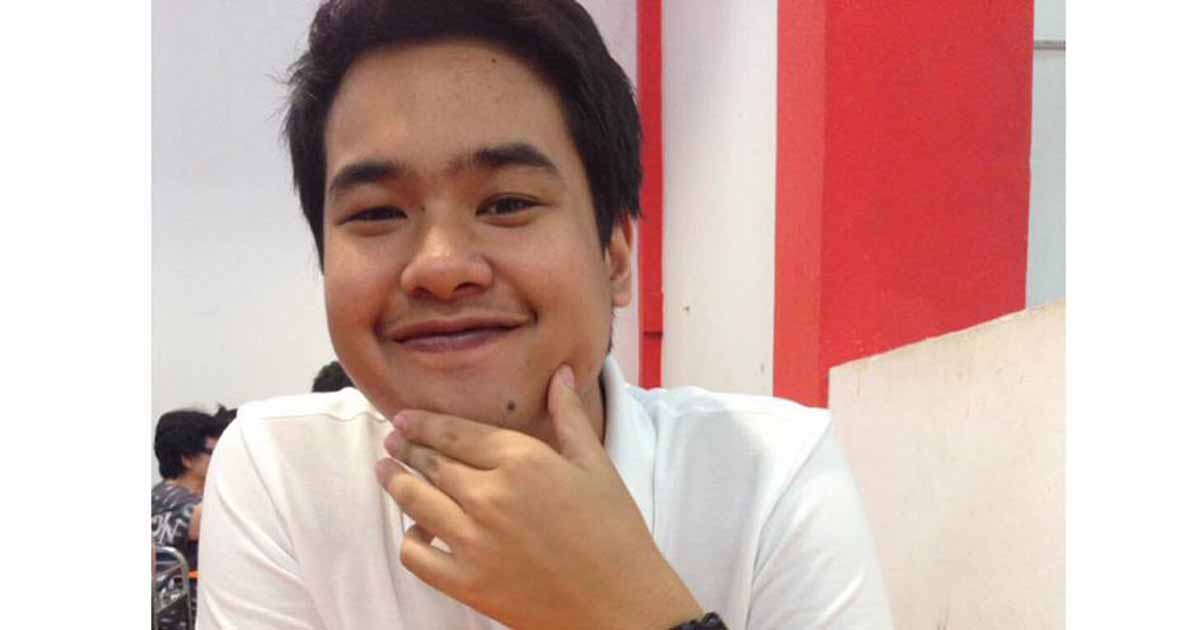
พันเทพ (พี) รัตนานุพงศ์
THE DESIGN AND DEVELOPMENT OF THE PRESSURE SENSOR FOR MEDICAL APPLICATION BY USING LONG-PERIOD FIBER GRATING
Nowadays, the aging society is rapidly approaching. Healthcare of elderly people is of prime concern to related agencies. This research aims to be a small part to contribute a better care for elderly people by proposing a foot plantar pressure measurement system based on the mechanically induced long-period fiber grating (MLPFG). This system is composed of sensing units embedded in a platform at three particular points corresponding to three critical plantar areas: forefoot, mid foot and hind foot. Each sensing unit is mainly composed of a grooved plate with a grating period pressed on a single mode fiber to induce the grating structure. Preliminary results showed that the performances of the MLPFG had a potential to be implemented as the foot plantar pressure measurement system. The response of the pressure sensor to the applied force was recorded in terms of the wavelength shift which could separately relate to different force perturbation from a particular area of a subject’s foot. Therefore, this led to the application of the pressure sensing system to identify a foot type, detect the body center of mass (BCM) displacement and monitor the stance phase of a gait cycle. In all, the investigation showed satisfactory and reliable results of the proposed system. M.Sc. (Physics) Granted 2019
punthep.r@gmail.com
0866856854
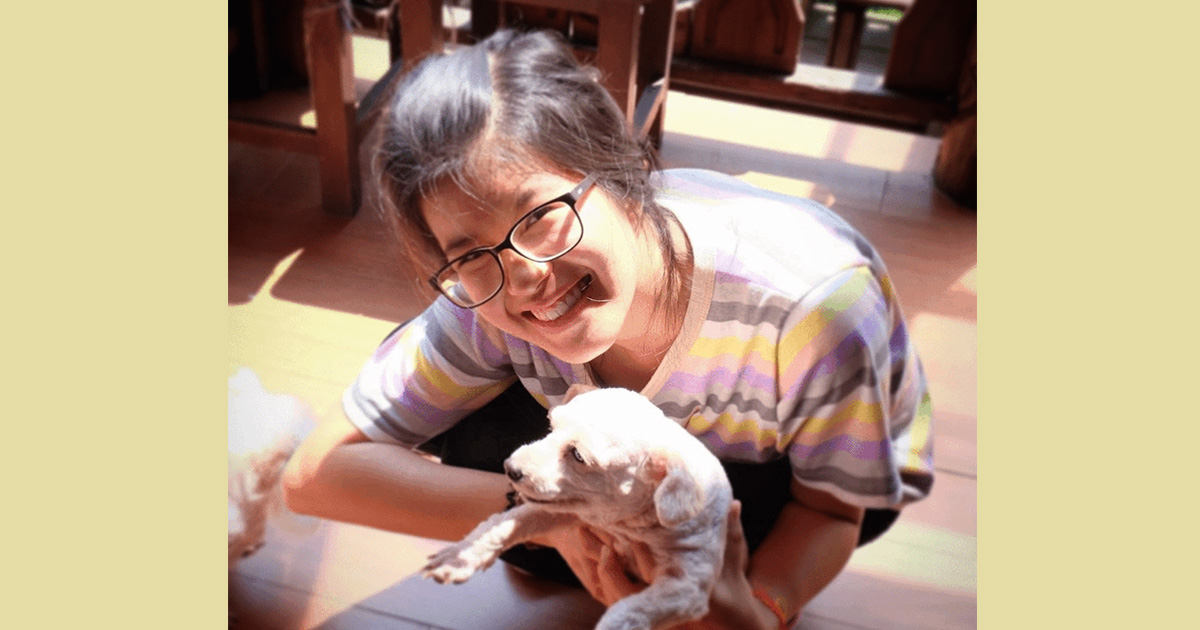
ปนัดดา (ลูกน้ำ) ระย้า
THE DENSITY DETERMINATION OF SMALL GLASS FRAGMENTS OF IRREGULAR SHAPES BASED ON STOKES’ LAW
Forensic glass analysis can provide association between victim and suspect or the source correspondence. Glass density is one of the physical properties used for investigating glass evidence. A typical method known as a Sink-float method is found to have some disadvantages such as using toxic solutions and requiring a considerable size of the glass sample (>3mm in size). Therefore, this study aimed to propose an alternative method for density determination that is sensitive to smaller glass fragments and using a non-toxic solution. The proposed method is based on Stokes’ law, which involves the measurement of the particle terminal velocity in two liquids with different densities and viscosities. Glycerol and cane syrup were properly selected to be used as the testing liquids of this study. The instrument was successfully constructed and implemented. The measured glass density values were comparable to the glass density values measured from the standard buoyancy method (ASTM). The glass density values from buoyancy method used as the reference glass density that found the average densities in 2.197±0.124 g/cm3 for the laboratory glass, 2.411±0.013 g/cm3 for the bottle glass, 2.486±0.027 g/cm3 for the car glass, 2.487±0.038 g/cm3 for the architectural glass, and 2.478±0.017 g/cm3 for the kitchenware glass (0.531-2.066 of %RSD). This proposed method worked satisfactorily in the classification of the density values as the standard method with lower precision (0.30-6.83 of %RSD). Some samples were found to have similar values of densities to other samples. For more differentiable and reliable results, suitable conditions were considered to be applied in this proposed method. These conditions included the polishing of the sharp edges of the glass specimen, releasing the glass fragment under the liquid surface, and marking a point on the center of the glass piece. The smallest glass size sensitive to this method was found to be 0.3×0.1 cm. Moreover, the color, surface features, and thickness of specimens were included in the procedure for the glass examination in forensic science work. A blind test was carried out and the measured results were found to correspond to the reference results. It clearly reveals that the proposed method based on Stokes’ law with an elective procedure can be applied to analyze glass fragments. M.Sc. (Forensic science) Granted 2019
r.panadda2017@gmail.com
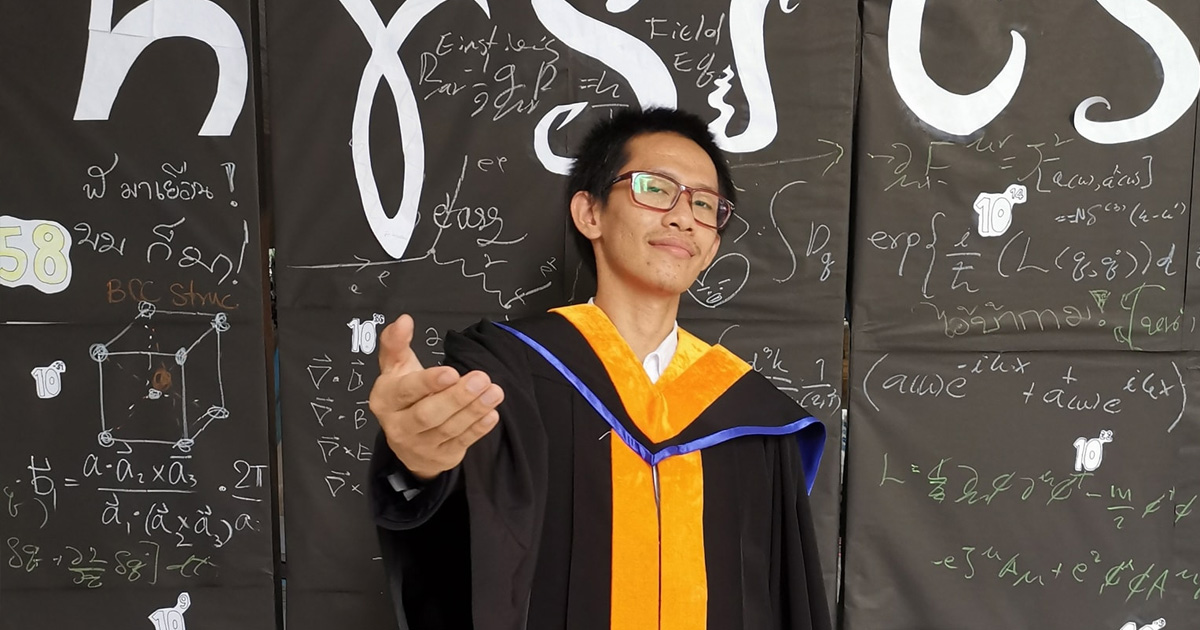
นัทธพงศ์ (นัท) นุชสิริกุลพงศ์
EFFECTS OF LESSON SEQUENCE ON STUDENT LEARNING: FREE-BODY DIAGRAM AND NEWTON’S LAWS
Lesson sequence is important for student learning in many topics in physics. There are two interesting lesson sequences for high-school physics in the topic of force and motion: teaching free-body diagrams before Newton’s laws (FbN sequence) and teaching Newton’s laws before free-body diagrams (NbF sequence). The aim of this study is to investigate the effect of these lesson sequences on student learning of force and motion. The sample groups are grade-ten high school students. After the different lesson sequences were implemented in two classes, the students' test results revealed that the different lesson sequences have no significant different effect on students' learning on the topic of force and motion, confirming the preliminary study's findings. Similar difficulties of students in both groups were found in two parts of the test. Students from both groups performed poorly in the Newtonian concept part. They thought that the force is related to the velocity. From the free-body diagram result, most students thought that an object could not apply force to another object. However, a different point of students’ performance between the two groups was found in the problem-solving part of the test. The results showed that Newton’s second law was written in their calculation and the number of FbN students who did this is higher than the others. M.Sc. (Physics) Granted 2021
N/A
บัณฑิต

รุจยา (บิว) ธนูรักษ์
Applied Optics
B.Sc. (Physics) Granted 2019
beau_rujaya@hotmail.com

สิทธิโชค (ฮิว) สมุทรไชยกิจ
Applied Optics
B.Sc. (Physics) Granted 2019
hillkoo_game@hotmail.com

ณัฐพล (นัท) ขำกลิ่น
Applied Optics
B.Sc. (Physics) Granted 2019
nutthaphon.kha@student.mahidol.ac.th
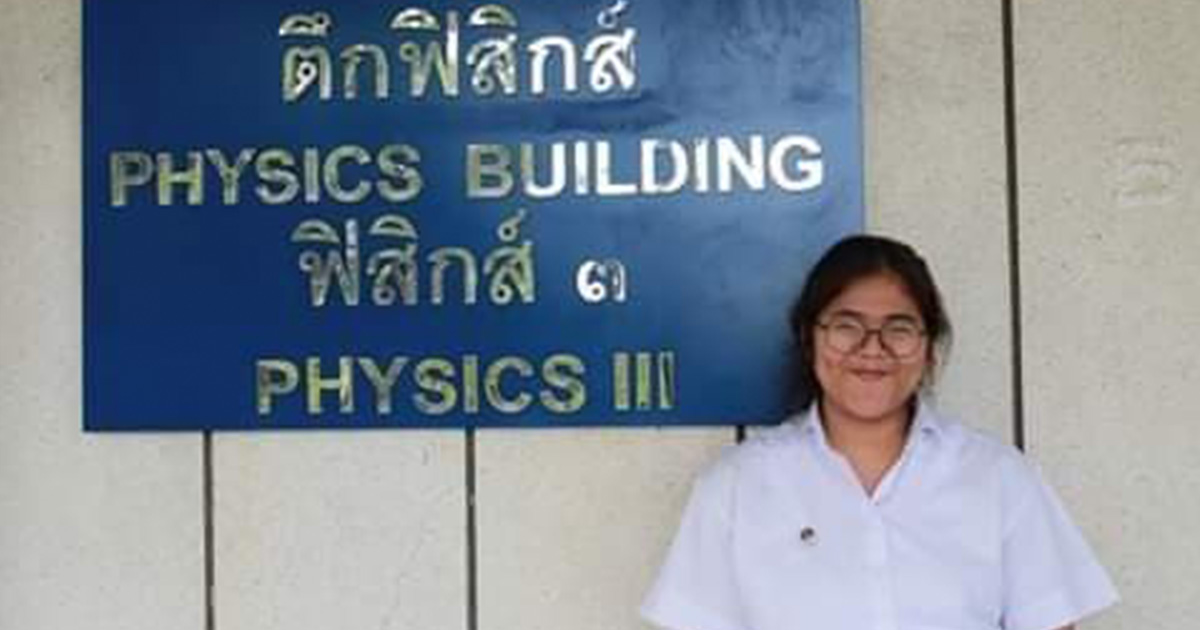
จิราภา (ปลาย) สิงหะกุลพิทักษ์
Applied Optics
B.Sc. (Physics) Granted 2020
jirapa.sin@student.mahidol.edu

นัชชา (นัท) นุชสิริกุลพงศ์
Applied Optics
B.Sc. (Physics) Granted 2020
natcha.nuc@student.mahidol.ac.th

อนุวัฒน์ (ไอซ์) แก้วจรูญ
Applied Optics
B.Sc. (Physics) Granted 2020
anuwat.kae@student.mahidol.ac.th

ณิชชา (ปูเป้) สมมิตร
Applied Optics
B.Sc. (Physics) Granted 2021
nichchar.som@student.mahidol.edu
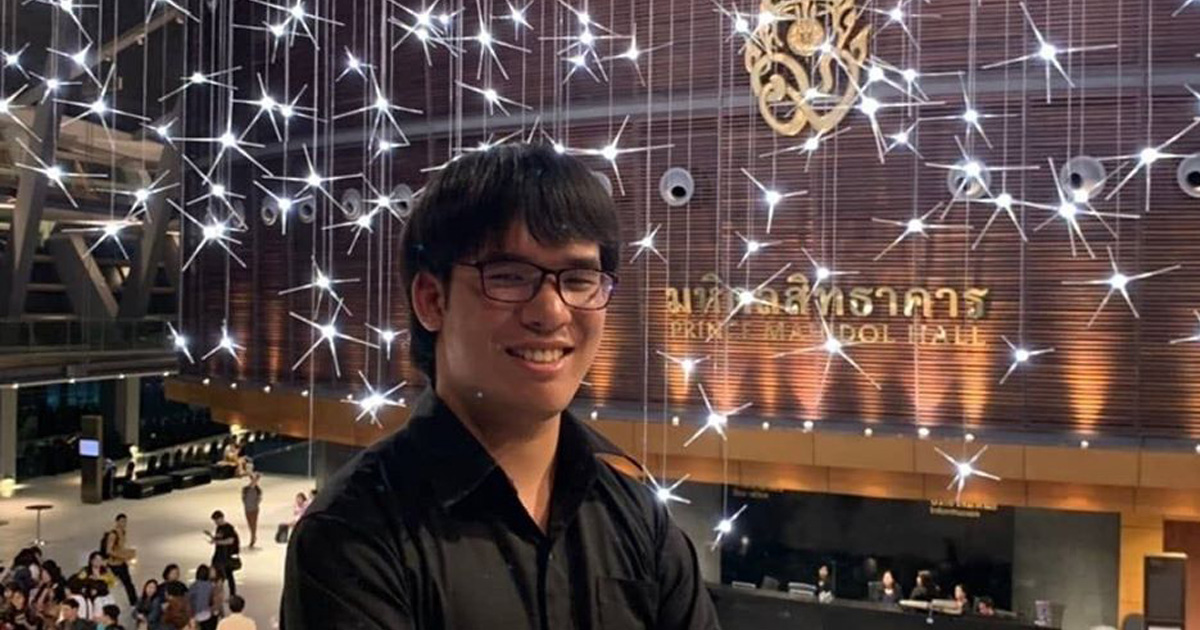
สิงหวัชร์ (ขุนวัง) ธรรมสาโร
Applied Optics
B.Sc. (Physics) Granted 2021
singhawat.tha@student.mahidol.edu
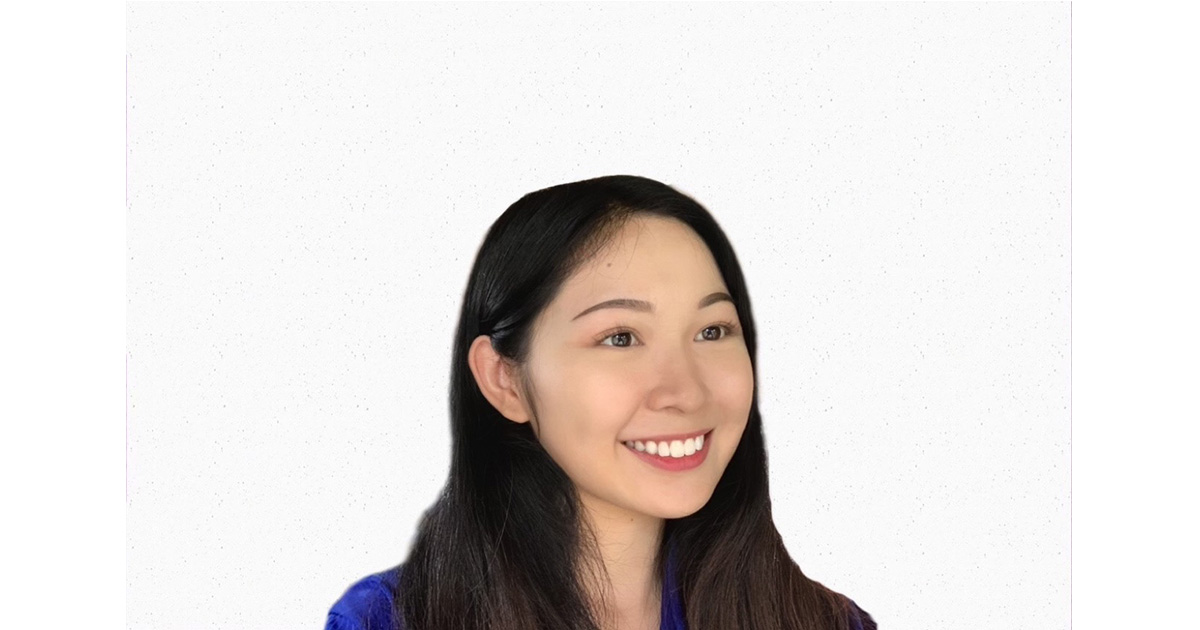
ภคณัฏฐ์ (ปุกปิ๊ก) ศรีเจริญ
Physics Education
B.Sc. (Physics) Granted 2022
pakanat.sri@student.mahidol.edu

จิรสิน (อิ้ง) อัศวกุล
Applied Optics
B.Sc. (Physics) Granted 2022
jirasin.asw@student.mahidol.edu
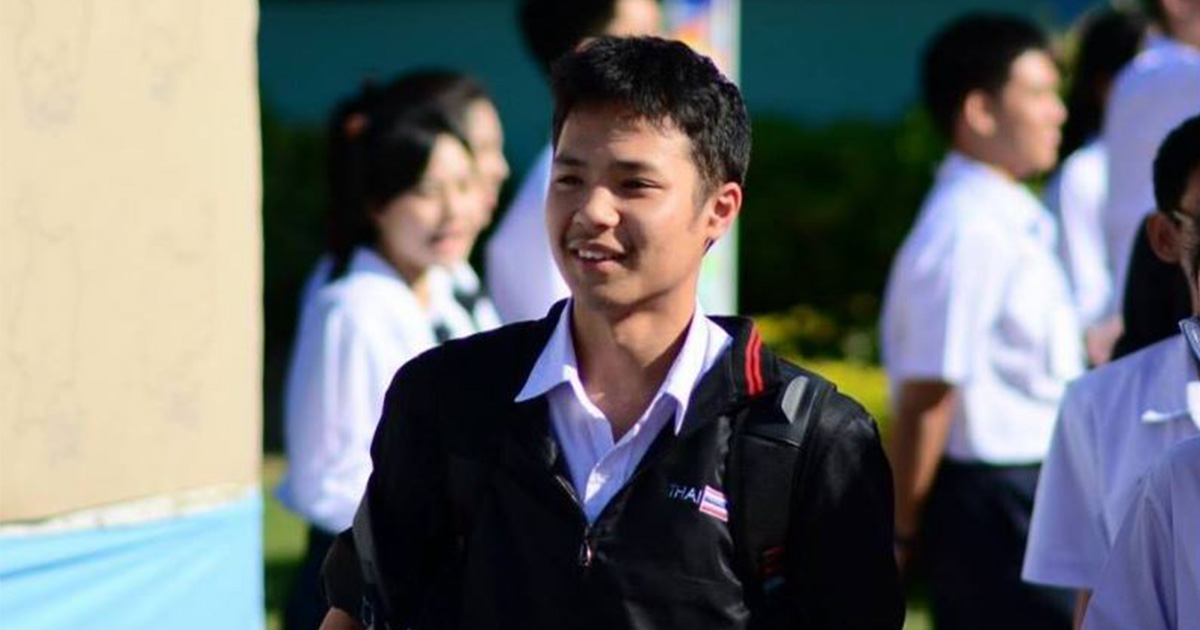
ทรงพล (เจมส์) จิรยั่งยืนยง
Physics Education
B.Sc. (Physics) Granted 2022
jamesongphon01@gmail.com
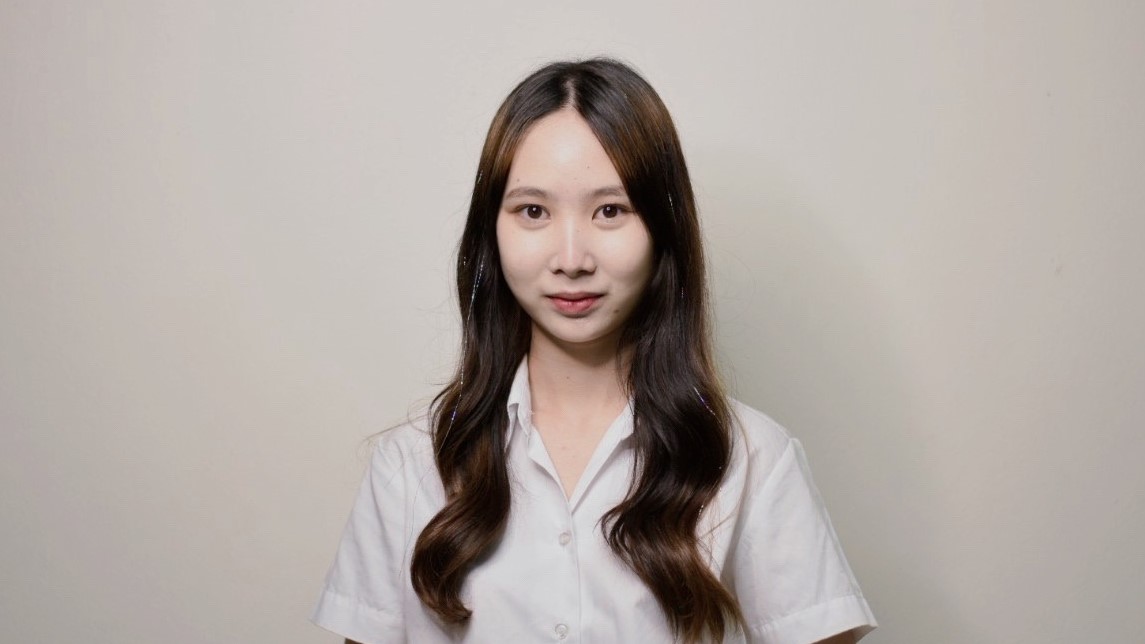
ปัญชยากร (เจ้านายต์) อ่อนวงษ์
Forensic physics
B.Sc. (Physics) Granted 2024
panchayakorn.onw@student.mahidol.edu

ฮัยฟาห์ (ฟา) กาเซ็ง
Physics Education
B.Sc. (Physics) Granted 2024
Haifa.kas@student.mahidol.edu